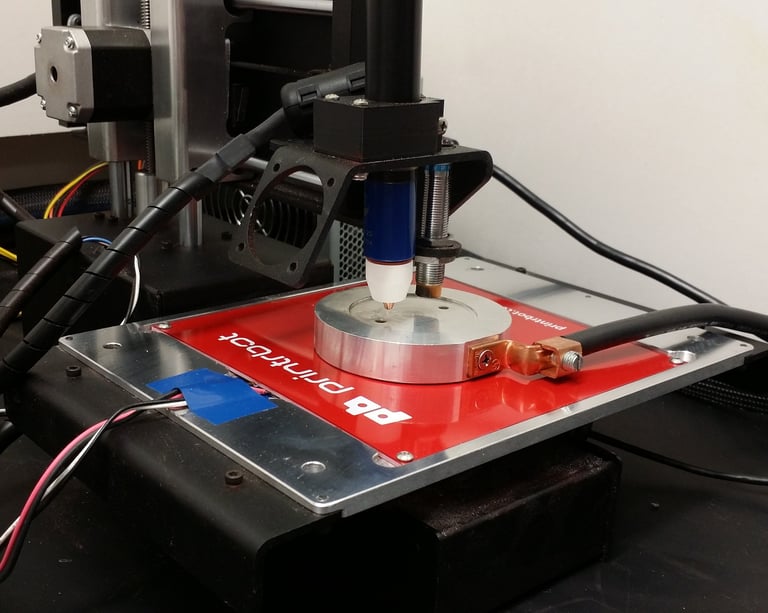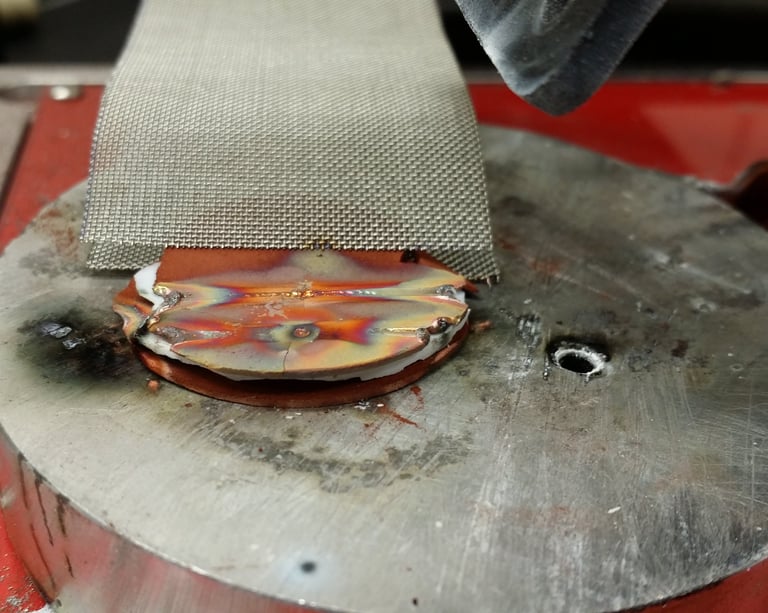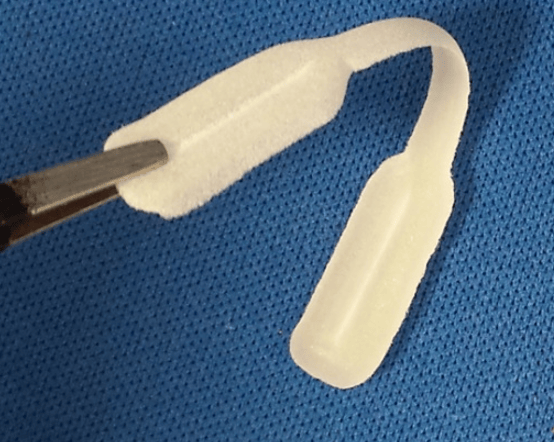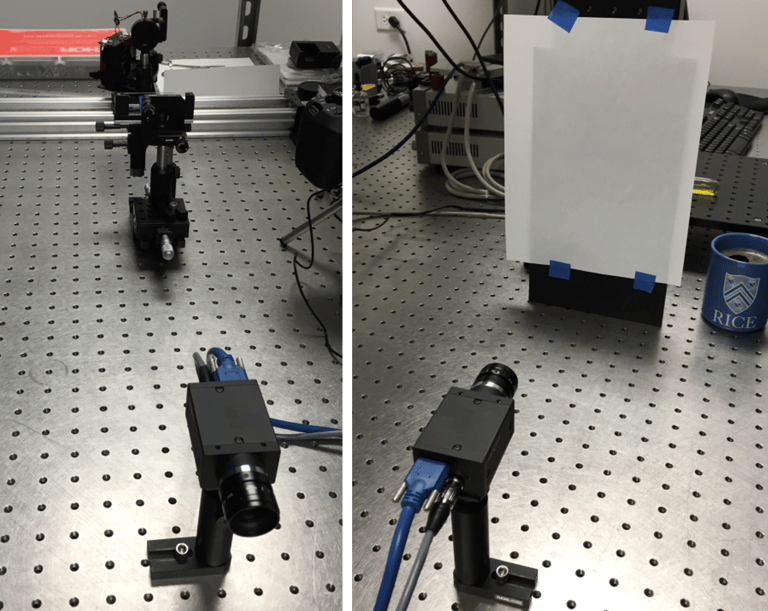HAMMER
HAMMER is a novel platform proposed to enable true multi-material 3D printing: polymers, metals, and ceramics, in a single system. Unlike current machines limited to one material class, HAMMER aimed to fabricate parts with spatially tailored properties by combining different materials during the build process.
The proposed system integrates optical alignment and real-time feedback control for error correction, ensuring geometric accuracy throughout fabrication. By merging hybrid material capability with automated precision, HAMMER promises a faster, more efficient alternative to existing high-cost metal AM systems, enabling the next generation of functional, multi-material components.
Hybridized Additive Manufacturing Machine with Error Rectification
Year: 2016
Customer: AF
The Puzzle
What was the challenge? Why was it worth solving?
Flight platforms of the future must be lighter, stronger, and smarter. To meet this demand, the Air Force is actively investing in hybrid materials that combine strength, functionality, and low weight, often by integrating nanomaterials, novel composites, or multifunctional structures. However, incorporating these advanced materials into aerospace systems is not just a matter of material discovery; it's a manufacturing challenge. Hybrid materials cannot be simply "swapped in", they must be built into the design and fabricated with precision.
Traditional manufacturing processes aren’t designed for the spatial complexity or material diversity these systems require. Even current additive manufacturing (AM) platforms fall short, they are mostly limited to a single material class and lack the ability to combine polymers, metals, and ceramics in a unified, functional part.
What’s needed is a new generation of AM technology that can merge diverse materials within a single build process, while maintaining alignment, geometric fidelity, and aerospace-grade performance.
The Game Plan
How the problem was approached — strategy, tools, and intent.
The team proposed to evaluate a plasma arc system as the central processing unit of a new hybrid additive manufacturing platform, capable of sintering polymers, metals, and ceramics into solid, multi-material structures. Our focus was on tuning key parameters: plasma power, standoff distance, and gas flow, to determine how each material class responds during deposition.
Two printhead types were tested: a plasma spray head for powdered feedstocks and an inkjet-style head for liquids and precursors. Each offered distinct advantages in build resolution and throughput.
In parallel, we were designing and prototyping an optical diffraction-based feedback system to enable precise, real-time positional correction. This control loop was essential to ensure accuracy during complex, multi-material builds.
The project goal was clear: validate the feasibility of hybrid deposition using plasma-based methods, demonstrate early positional control, and lay the foundation for a machine capable of building fully integrated, multi-material structures with aerospace-grade fidelity.
What Actually Happened
The results. The breakthroughs. Maybe even a few surprises.
The project successfully demonstrated the feasibility of hybrid additive manufacturing using a plasma arc system. The team sintered polymers with melting points up to 300°C and achieved up to 99% part density using Polyamide 6. Metals, including copper and iron, were also processed, reaching densities between 80–90%, with near-full density in transferred arc mode.
A desktop 3D printer was modified to integrate the plasma torch and tested with polymer feedstock.
The optical feedback control system was evaluated in 2D, achieving positional error correction down to 8.5 µm ± 0.15 µm.
Finally, the preliminary design of the HAMMER system was completed, including a custom plasma printhead and identification of critical hardware components and their readiness levels.
Show & Tell
Visuals, prints, textures, data — what it looked like in the real world.




Plasma-Equipped Printrbot Setup - When you're building from scratch, start with what you’ve got, proof-of-concept begins here.
Sintering Dissimilar Materials: Not all experiments go smoothly… but every challenge taught us something new.




Polyamide 6 Dog Bone Specimen: Sintered to near perfection, this PA6 tensile specimen is a beauty. We were so proud of it.
Error Rectification System in Action: Some serious precision, feedback control down to single-digit microns.
Lessons from the Lab
What worked. What didn’t. What was learned along the way.
Plasma works—mostly.
We proved plasma arc can sinter polymers and metals. Polyamide 6 gave us dense, clean parts. Metals were trickier, sintering worked, but full melting required tighter control.Material matters.
Not all materials behave the same. Processing parameters must be tailored for each class, especially under transferred arc mode.Feedback is everything.
Our diffraction-based feedback system hit sub-10 µm accuracy. It’s essential for managing heat-driven processes like plasma.Start simple, iterate fast.
Modding a desktop printer with a plasma torch wasn’t elegant, but it worked. Sometimes proving the physics matters more than building the perfect machine.Hybrid systems need harmony.
The printhead, motion control, and feedback must all play well together. True hybrid printing is as much about integration as it is about innovation.